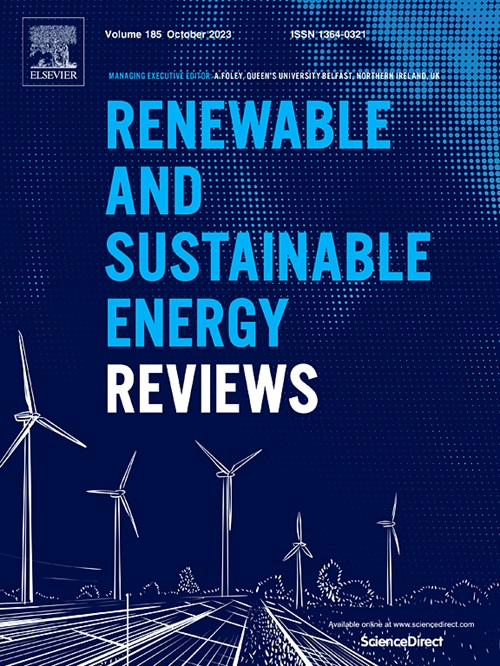Ambitious hydropower plans will accelerate greenhouse gases emissions from the Hindu-Kush Himalaya region
IF 16.3
1区 工程技术
Q1 ENERGY & FUELS
引用次数: 0
Abstract
Large-scale hydropower expansion in the Hindu-Kush Himalaya (HKH) can meet the increasing electricity demand and promote local economic development, but bring new environmental concerns, e.g., a rising dam-induced greenhouse gases (GHG) emissions. Here, we compiled an open-access database detailing dams (n = 2739) in the HKH region, and estimated their GHG emissions. The results show that the estimated total GHG emissions from the HKH dams are approximately 22.1 Tg CO2eq. yr−1, and more than 90 % were attributed to the dams under construction or planned. Further analysis suggested that the estimated carbon intensities of HKH dams (median = 38.1 kg CO2eq. MWh−1) are often comparable with that of other renewable energy sources, while 17.4 % of the hydropower plants are still incompatible with low-carbon goal. Notwithstanding its limitations, this study provides the first estimation of reservoir GHG emissions in the HKH region and contributes to SDG 7 (Affordable and Clean Energy) by exploring sustainable energy solutions, and to SDG 13 (Climate Action) by identifying strategies to mitigate the environmental impacts of energy production.

求助全文
约1分钟内获得全文
求助全文
来源期刊

Renewable and Sustainable Energy Reviews
工程技术-能源与燃料
CiteScore
31.20
自引率
5.70%
发文量
1055
审稿时长
62 days
期刊介绍:
The mission of Renewable and Sustainable Energy Reviews is to disseminate the most compelling and pertinent critical insights in renewable and sustainable energy, fostering collaboration among the research community, private sector, and policy and decision makers. The journal aims to exchange challenges, solutions, innovative concepts, and technologies, contributing to sustainable development, the transition to a low-carbon future, and the attainment of emissions targets outlined by the United Nations Framework Convention on Climate Change.
Renewable and Sustainable Energy Reviews publishes a diverse range of content, including review papers, original research, case studies, and analyses of new technologies, all featuring a substantial review component such as critique, comparison, or analysis. Introducing a distinctive paper type, Expert Insights, the journal presents commissioned mini-reviews authored by field leaders, addressing topics of significant interest. Case studies undergo consideration only if they showcase the work's applicability to other regions or contribute valuable insights to the broader field of renewable and sustainable energy. Notably, a bibliographic or literature review lacking critical analysis is deemed unsuitable for publication.
 求助内容:
求助内容: 应助结果提醒方式:
应助结果提醒方式:


